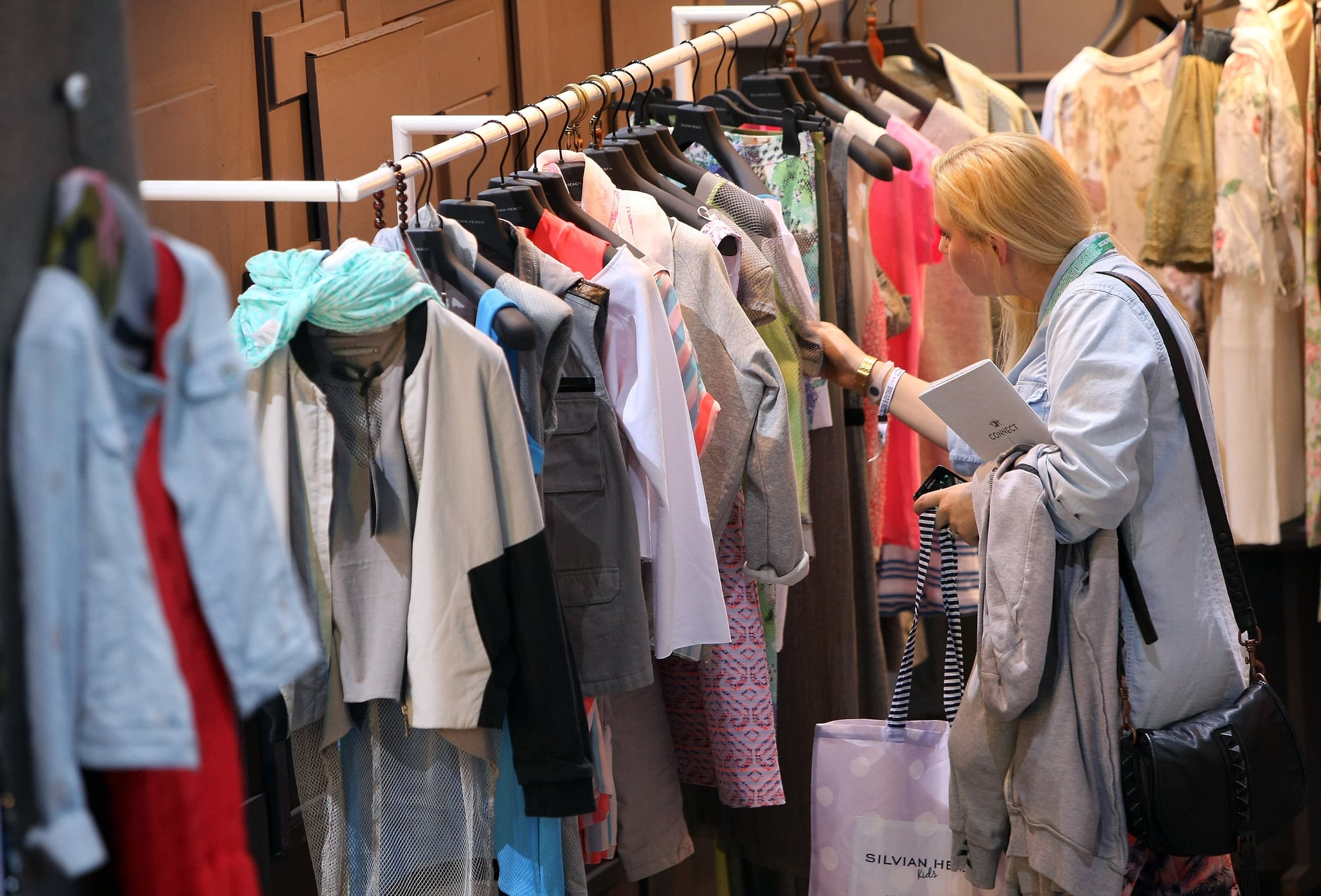Unlocking the Potential of Pre-Owned Fashion
The fashion industry is undergoing a significant transformation, with consumers increasingly seeking sustainable and environmentally-friendly options. One trend that has gained significant traction in recent years is the rise of pre-owned fashion. Selling used clothes on Amazon has become a lucrative business, with many entrepreneurs capitalizing on the growing demand for second-hand clothing. In this article, we will explore the ins and outs of how to sell used clothes on Amazon, providing valuable insights and tips for those looking to tap into this emerging market.
According to a recent report, the global second-hand clothing market is projected to reach $51 billion by 2023, with online marketplaces like Amazon playing a significant role in this growth. As consumers become more conscious of the environmental and social impact of their purchasing decisions, the demand for pre-owned fashion is expected to continue to rise. For sellers, this presents a unique opportunity to profit from the growing demand for sustainable fashion.
Amazon, in particular, has become a hub for second-hand clothing sales, with many sellers leveraging the platform’s vast customer base and trusted brand reputation to sell their pre-owned items. However, with great opportunity comes great competition, and sellers must be strategic in their approach to stand out in a crowded market. In the following sections, we will delve into the specifics of how to sell used clothes on Amazon, including setting up a seller account, identifying profitable items, and optimizing listings for maximum visibility.
Whether you’re a seasoned entrepreneur or just starting out, selling used clothes on Amazon can be a profitable venture. With the right strategies and techniques, you can tap into the growing demand for pre-owned fashion and build a successful business. In this article, we will provide you with the tools and knowledge you need to get started, including tips on how to navigate Amazon’s policies and procedures, as well as how to overcome common challenges faced by sellers in the used clothing market.
Getting Started: Setting Up Your Amazon Seller Account
To start selling used clothes on Amazon, you’ll need to create a professional seller account. This will give you access to Amazon’s vast customer base and allow you to list your products for sale. To get started, navigate to sellercentral.amazon.com and click on the “Start Selling” button. You’ll be prompted to enter your email address and create a password.
Next, you’ll need to provide some basic business information, including your business name, address, and tax identification number. You’ll also need to verify your email address and phone number. This is a crucial step in setting up your account, as it will help Amazon verify your identity and ensure that you’re a legitimate seller.
Once you’ve completed the registration process, you’ll need to choose an account type. Amazon offers two types of accounts: individual and professional. Individual accounts are free, but they come with limitations, such as a cap on the number of items you can sell per month. Professional accounts, on the other hand, require a monthly fee, but they offer more features and flexibility.
In addition to the monthly fee, you’ll also need to pay a selling fee on each item you sell. This fee varies depending on the category and price of the item, but it typically ranges from 8% to 15%. You’ll also need to pay a shipping fee, which will depend on the weight and dimensions of the item.
Amazon also offers a variety of tools and services to help you manage your inventory and fulfill orders. These include Fulfillment by Amazon (FBA), which allows you to store your products in Amazon’s warehouses and have them shipped directly to customers. You’ll also have access to Amazon’s customer service team, which can help you resolve any issues that may arise.
By following these steps and setting up your Amazon seller account, you’ll be well on your way to selling used clothes on Amazon and capitalizing on the growing demand for sustainable fashion. In the next section, we’ll explore how to find profitable used clothing items to sell on Amazon, including research methods, popular brands, and current trends.
What to Sell: Identifying Profitable Used Clothing Items
When it comes to selling used clothes on Amazon, it’s essential to identify profitable items that are in high demand. To do this, you’ll need to conduct research and stay up-to-date on current trends. One way to start is by using Amazon’s best-seller list and browsing through the top-selling items in the clothing category. This will give you an idea of what types of items are currently popular and in demand.
Another way to find profitable items is by using online tools such as Google Trends and Amazon’s own keyword research tool. These tools can help you identify keywords and phrases that are currently trending and in high demand. You can also use social media platforms like Instagram and Pinterest to see what types of clothing items are currently popular and trending.
When it comes to specific brands, some of the most profitable used clothing items to sell on Amazon include designer brands like Gucci, Louis Vuitton, and Chanel. These brands are often in high demand and can command high prices. Other popular brands include athletic wear brands like Nike and Adidas, as well as outdoor brands like Patagonia and The North Face.
In addition to researching popular brands and trends, it’s also essential to consider the condition and quality of the items you plan to sell. Amazon buyers are often looking for high-quality, gently used items that are in good condition. Make sure to inspect each item carefully before listing it for sale, and be honest about any flaws or defects in the item’s description.
By conducting thorough research and staying up-to-date on current trends, you can identify profitable used clothing items to sell on Amazon and increase your chances of success in the used clothing market. In the next section, we’ll discuss the importance of competitive pricing and how to research competitors to stay ahead of the game.
Pricing Strategies: How to Compete with Other Sellers
When it comes to selling used clothes on Amazon, pricing is a crucial factor in determining the success of your business. To compete with other sellers, you need to set prices that are competitive, yet profitable. One way to do this is by researching your competitors and analyzing their pricing strategies.
Start by searching for similar products on Amazon and taking note of the prices offered by other sellers. You can also use tools like Jungle Scout or Helium 10 to help you find the best prices for your products. Once you have a good understanding of the market prices, you can set your own prices accordingly.
Another important factor to consider when setting prices is the condition and quality of the item. If the item is in excellent condition and is a rare or hard-to-find brand, you may be able to charge a premium price. On the other hand, if the item is in poor condition or is a common brand, you may need to set a lower price to remain competitive.
It’s also important to keep an eye on your prices and adjust them as needed. Amazon’s pricing algorithm is constantly changing, and prices can fluctuate rapidly. By monitoring your prices and adjusting them accordingly, you can stay ahead of the competition and ensure that your products remain competitive.
In addition to setting competitive prices, you can also use pricing strategies like price anchoring and price matching to stay ahead of the competition. Price anchoring involves setting a higher price for a product and then offering a discount to make it appear more attractive to customers. Price matching involves matching the prices of your competitors to ensure that your products remain competitive.
By using these pricing strategies and staying on top of market trends, you can ensure that your products remain competitive and profitable. In the next section, we’ll discuss the importance of optimizing your product listings to increase visibility and sales.
Optimizing Listings: How to Create Attractive and Informative Product Pages
When it comes to selling used clothes on Amazon, creating effective product listings is crucial for attracting customers and driving sales. A well-optimized listing can help your product stand out from the competition, increase visibility, and ultimately drive more sales.
One of the most important elements of a product listing is the title. The title should be descriptive, concise, and include relevant keywords that customers might use when searching for the product. For example, if you’re selling a used pair of Levi’s jeans, your title might be “Levi’s 501 Used Jeans – Men’s Size 32×30 – Excellent Condition”.
In addition to the title, high-quality images are also essential for creating an attractive and informative product listing. Images should be clear, well-lit, and show the product from multiple angles. You should also include images of any flaws or defects, as this will help build trust with potential customers.
The product description is also a critical element of a product listing. The description should be detailed and include information about the product’s condition, size, material, and any other relevant details. You should also include keywords that customers might use when searching for the product, as this will help improve the listing’s visibility in search results.
Another important element of a product listing is the use of relevant keywords. Keywords should be included in the title, description, and tags, and should be relevant to the product and the customer’s search query. By including relevant keywords, you can improve the listing’s visibility in search results and attract more customers.
Finally, make sure to optimize your product listing for mobile devices. Many customers shop on Amazon using their mobile devices, so it’s essential to ensure that your listing looks great and is easy to navigate on smaller screens.
By following these tips and creating effective product listings, you can increase visibility, drive more sales, and succeed in the competitive world of selling used clothes on Amazon. In the next section, we’ll discuss the importance of reliable shipping and fulfillment, including options for shipping carriers, packaging materials, and Amazon’s Fulfillment by Amazon (FBA) program.
Shipping and Fulfillment: Ensuring Timely and Reliable Delivery
When it comes to selling used clothes on Amazon, shipping and fulfillment are critical components of the sales process. Ensuring that your products are delivered to customers in a timely and reliable manner is essential for building trust and maintaining a positive reputation.
One of the most important decisions you’ll make as an Amazon seller is choosing a shipping carrier. Amazon offers a range of shipping options, including USPS, UPS, and FedEx. Each carrier has its own strengths and weaknesses, so it’s essential to research and compare rates, delivery times, and services before making a decision.
In addition to choosing a shipping carrier, you’ll also need to consider packaging materials. Amazon requires that all products be packaged in a way that prevents damage during shipping. You’ll need to invest in sturdy boxes, bubble wrap, and other materials to ensure that your products arrive at their destination in good condition.
Another option for shipping and fulfillment is Amazon’s Fulfillment by Amazon (FBA) program. FBA allows you to store your products in Amazon’s warehouses, and Amazon will handle packaging, shipping, and customer service on your behalf. This can be a convenient option, but it does come with additional fees.
Regardless of which shipping option you choose, it’s essential to ensure that your products are delivered to customers in a timely and reliable manner. This means tracking shipments, responding to customer inquiries, and resolving any issues that may arise during the shipping process.
By prioritizing shipping and fulfillment, you can build trust with your customers and maintain a positive reputation on Amazon. In the next section, we’ll discuss the importance of managing inventory and tracking sales, including tools and software that can help you stay organized and focused.
Managing Inventory and Tracking Sales: Essential Tools for Success
As an Amazon seller, managing your inventory and tracking your sales are crucial components of running a successful business. Without effective inventory management, you risk overselling or underselling your products, which can lead to lost sales, disappointed customers, and a damaged reputation.
Fortunately, there are many tools and software available that can help you stay organized and focused. One of the most popular inventory management tools for Amazon sellers is Jungle Scout. This tool allows you to track your inventory levels, monitor your sales, and receive alerts when your products are running low.
Another essential tool for Amazon sellers is a sales tracking software. This type of software allows you to monitor your sales in real-time, track your profits, and identify areas for improvement. Some popular sales tracking software for Amazon sellers include Sellics, AMZScout, and Helium 10.
In addition to using inventory management and sales tracking software, it’s also important to keep accurate records of your sales and inventory levels. This can be done using a spreadsheet or a tool like Google Sheets. By keeping accurate records, you can identify trends, track your progress, and make informed decisions about your business.
Finally, it’s essential to stay organized and focused by using a calendar or planner to keep track of important dates and deadlines. This can include things like restocking dates, shipping deadlines, and customer service requests. By staying organized and focused, you can ensure that your business runs smoothly and efficiently.
By using these essential tools and software, you can effectively manage your inventory and track your sales, which is crucial for success in the used clothing market on Amazon. In the next section, we’ll discuss common challenges faced by sellers in the used clothing market and provide tips on how to overcome them.
Overcoming Common Challenges: Tips for Success in the Used Clothing Market
As a seller in the used clothing market on Amazon, you may encounter several challenges that can impact your business. Returns, refunds, and negative feedback are common issues that can be frustrating and costly. However, with the right strategies and mindset, you can overcome these challenges and achieve success in the used clothing market.
One of the most common challenges faced by sellers in the used clothing market is returns. To minimize returns, make sure to provide accurate and detailed descriptions of your products, including any flaws or defects. Use high-quality images to show the product from multiple angles, and consider offering a satisfaction guarantee to build trust with your customers.
Refunds are another common challenge faced by sellers in the used clothing market. To minimize refunds, make sure to clearly state your return and refund policies in your product listings. Consider offering a refund or exchange option to customers who are not satisfied with their purchase.
Negative feedback is also a common challenge faced by sellers in the used clothing market. To minimize negative feedback, make sure to respond promptly to customer inquiries and concerns. Consider offering a satisfaction guarantee or a refund option to customers who are not satisfied with their purchase.
In addition to these strategies, it’s also important to stay organized and focused. Use tools and software to manage your inventory and track your sales, and consider outsourcing tasks such as shipping and fulfillment to free up more time to focus on growing your business.
By following these tips and staying focused on providing excellent customer service, you can overcome common challenges and achieve success in the used clothing market on Amazon. Remember to stay up-to-date with the latest trends and best practices, and always be looking for ways to improve and grow your business.





